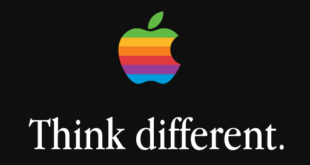
Zoom taunts me with the same five words every time I log on: “Your internet connection is unstable.” It’s frustrating, not just because I would like to be able to contribute to a conversation without my face freezing, or because the word “unstable” isn’t welcome in any context right now. The phrase makes me especially bitter because when it comes to being unstable, Zoom doesn’t really have a leg to stand on.
The video platform has got a lot of things right. Its biggest selling point is that it’s easy to use: it’s free for 45 minute intervals, you can invite anyone to join a call by simply clicking on a link, and it doesn’t limit the amount of people that can be on a call.
But Zoom still leaves a lot to be desired. One of its biggest issues is that it can’t adjust to shoddy internet connections, and the problem gets worse as more people join a call. For many, it’s just irritating. But these video conference glitches pose a far greater problem for some disabled meeting participants, who can find every conversation impossible to follow.
“Normally at work, a palantypist sends me live subtitles during conference calls with large groups of people or clients so that I can actively take part,” says Sarah Petherbridge, a senior manager in corporate tax at EY who has been profoundly deaf since birth. Since the lockdown, she relies on video — and that has its pros and cons.
“In the current long-term working from home situation, video conferencing capabilities have been a real game-changer,” she says. If the working world had just converted to phone calls, rather than video chat, Petherbridge would have been totally isolated. But one wobbly wifi connection can throw the whole thing off. Reading lips gets more difficult as image quality dips, and impossible when everything freezes.
“Some conference call platforms have live captions, as long as you pre-schedule the meeting and use the desktop app,” says Petherbridge. “The captions don’t always work perfectly, but they can really help when trying to follow the lip movements of the person who is talking on video.”
Zoom lets you integrate captions from third party services, so you can pick (and pay for) your preferred provider. It’s a good band aid — and great for deaf students when they’re watching lectures — but it still means a deaf person’s virtual meeting experience is likely going to be worse.
“Seeing people and reading their body language is about 90 per cent of how I understand what’s happening,” says Petherbridge. Captions help, but they won’t tell the full story. It’d be like watching a subtitled movie, but the actors keep freezing in front of you. Petherbridge has started doing one-on-one calls, instead of joining large meetings. “It’s less tiring that way,” she says.
There is no clarity on whether Zoom has any plans to improve video for those with weaker internet connections. A spokesperson said the company was unable to provide a comment during the quarterly quiet period ahead of earnings.
The company has, however, been more vocal about its security issues. We’ve all heard the stories: a virtual Alcoholics Anonymous meeting was crashed by a naysayer shouting about how lovely wine is; twenty schoolchildren had their maths class infiltrated by a man and his penis; and countless virtual happy hours have been derailed by shared screens showing porn.
Zoom bombing is just one of the many security issues the company has had to tackle over the past few months. Others include generating directories of every email address used to start a call, and then allowing random people to start calling each other; stating that all calls were end-to-end encrypted, but having their own definition of what end-to-end encryption means; and a variety of other bugs that allow strangers to infiltrate Zoom users accounts and computers.
As soon as the company puts out one fire, it seems another starts. Phil Perry, who heads up Zoom in the UK and Ireland, says the company is shifting all its engineering resources “to focus on our biggest trust, safety, and privacy issues”. Zoom has rolled out several updates since all the Zoom bombing began, bringing in passwords and waiting rooms, to keep unwanted guests out.
“Any piece of software can have security issues,” says Basecamp founder David Heinemeier Hansson, especially when its popularity surges as intensely as Zoom’s did. “Usage of Zoom has ballooned overnight, far surpassing what we expected,” says Perry, explaining that at the end of December last year the most daily users Zoom had seen was ten million, now they’re at 200 million — that’s a lot. But Zoom’s security issues started long before lockdown.
In April last year, software engineer Jonathan Leitschuh discovered a vulnerability in the Zoom system that would allow “any website to forcibly join a user to a Zoom call, with their video camera activated, without the user’s permission”. He informed Zoom about the security issue, and gave them 90 days to fix it. When they didn’t, he published an article. A few days later, the security issue was gone. It was solved with a simple change to the user interface — which meant adding an extra click.
Zoom is anti clicks, it seems. From a ease-of-use point of view, that makes sense. You get into a meeting with a single click. It’s amazing, but not necessarily secure. The lack of clicks was the root of the Zoom bombing issue. Zoom made its default setting password free, so anyone could get into the meeting if they guessed the ten-character URL.
“These are not just general vulnerabilities that can happen to any piece of software, these were fundamental choices that Zoom made,” says Hansson. “Zoom chose to create a more insecure product because they believed it would save a few clicks, and that it would help with engagement.” It worked, the company is the biggest player on the market, but it has got a long way to go before it can be described by all as “trustworthy”.
We, as video conference users, can ease these changes along by egging on the competition, which is something we’ve forgotten to do so far. “We have this tendency to just flock to one technology,” says Hansson, “and we end up handing one company a monopoly on something as important as video conferencing, which is just a bad idea.” This is an innately competitive space, and we’d be much better off if there were ten alternatives fighting to be the best, rather than just one default option.
So the next time Zoom calls you unstable, give another platform a chance — it could have something nicer to say.
Coronavirus coverage from WIRED
😓 How did coronavirus start and what happens next?
❓ The UK’s job retention furlough scheme, explained
💲 Can Universal Basic Income help fight coronavirus?
🎲 Best video and board games for self-isolating couples
This Article was first published onSource link . We are just re-posting and re-sharing from their RSS feed.
Top Tech Stories
 Epic Heroes Entertainment Movies Toys TV Video Games News Art Pop culture news goodness
Epic Heroes Entertainment Movies Toys TV Video Games News Art Pop culture news goodness




